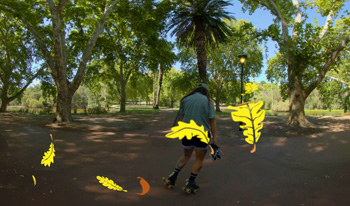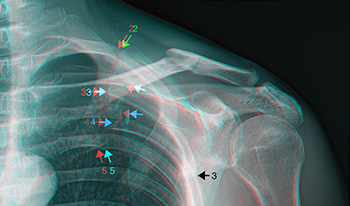
In 2024, the VR180 3D short film “Love Letter to Skating” was produced as part of a Curtin University HIVE Summer Internship project conducted by Curtin University student Cassandra Edwards (Cass for short). The film topically explores Cass’s fascination with skating since her childhood years. The location for the shoot was Hyde Park, a beautiful inner-city park with extensive gardens and large over-hanging trees in Perth, Western Australia. The production was filmed using a Canon R5C camera fitted with a Canon Dual Fisheye lens. This particular paper focuses on the stereoscopic post-production workflow. All stereoscopic content filmed natively with two lens cameras have some level of stereoscopic alignment errors. In the post-production stage, the native dual-fisheye 8K footage from the camera was converted to equirectangular format using the Canon EOS VR Utility software. The equirectangular VR180 3D footage was rectified using Stereoscopic Movie Maker V2 software. The rectified footage was then imported into Adobe Premiere where it was edited and combined with sound, music and graphics for the final production. Computer graphics were composited into the final film at the correct depth within Premiere. The final production premiered at the MINA 2024 – the 13th International Mobile Innovation Screening and Smartphone Film Festival 8th November 2024.

We present several stereoscopic 3D radiographs, obtained in a clinical setting using a technique requiring minimal operator training and no new technology. Reviewing known perceptual advantages in stereoscopic imaging, we argue the benefits for diagnosis and treatment planning primarily in orthopedics, with opportunities likely extended to rheumatology, oncology, and angiology (vascular medicine/surgery). These advantages accrue with the marginal additional cost of capturing just two or three supplementary radiographs using the proposed method. Presently, computed tomography (CT) scanning is standard for obtaining 3D imagery. We discuss relative advantages of stereoscopic 3D radiography (3DSR) in imaging resolution, cost, availability, and radiation dose. Further discussion will describe obstacles and challenges likely to be encountered in clinical implementation of 3DSR, to be mitigated through targeted training of clinicians and technicians. Further research is needed to explore and empirically validate the potential value of 3DSR. We hope to pave the way for this more accessible and cost-effective 3D imaging solution, enhancing diagnostic capabilities and treatment planning, especially in resource-constrained settings. (All 3D radiographs presented in this paper are in the red/cyan color anaglyph format. 3D anaglyph glasses are commonly available online, or in most comics bookstores. This report’s images can be found in L-R stereo-pair format, suitable for 3D viewing with a 3D screen or stereoscope, at this URL: https://www.starosta.com/3DSR/)